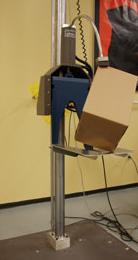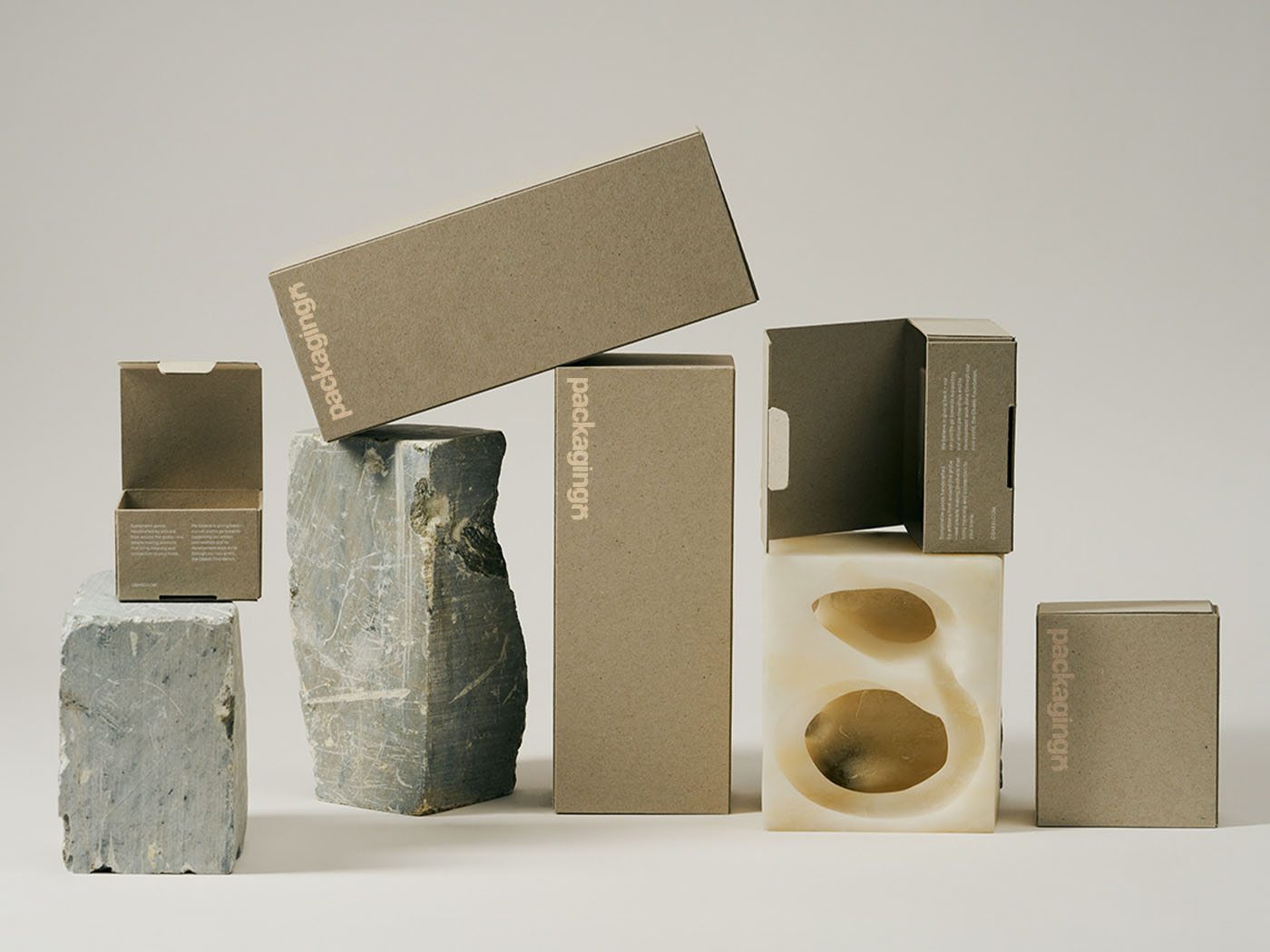Corrugated boxes are used frequently as shipping containers. Boxes need to contain the product from manufacturing through distribution to the sale and sometimes end-use. Boxes provide some measure of product protection by themselves but often require inner components such as cushioning, bracing and blocking to help protect fragile contents.
The shipping hazards depend largely upon the particular logistics system being employed. For example, boxes unitized into a unit load on a pallet do not encounter individual handling while boxes sorted and shipped through part of their distribution cycle as mixed loads or express carriers can receive severe shocks, kicks, etc.
Ordinary shipping containers require printing and labels to identify the contents, provide legal and regulatory information, and barcodes for routing. Boxes that are used for marketing, merchandising, and point-of-sale often have high graphics to help communicate the contents.
Some boxes are designed for the display of contents on the shelf. Others are designed to help dispense the contents. Popular for their strength, durability, lightness, recyclability, and cost-effectiveness, corrugated boxes are used for the shipping of a variety of items. Due to the quality and safety of packaging items in corrugated boxes, they are used widely in the food industry. The boxes handle the pressure that comes with stacking, making them ideal for easy transporting.
More than 95% of all products in the United States are shipped in corrugated boxes. Corrugated paperboard accounts for more than half of all the paper recycled in the US.
Stacking strength
One of the important functions of a corrugated box is to provide crush resistance (product protection) and adequate strength for stacking in warehouses.
A box can be designed by optimizing the grade of corrugated board, box design, flute direction, and inner supports. Support from the product also provides “load sharing” and can be an important factor. Box closures sometimes can have effects on box stacking strength.
If long-term storage of corrugated boxes in high humidity is expected, extra strength and moisture resistance are called for.
The method of loading boxes on pallets strongly affects stacking. Vertical columns provide the best box performance while interlocking patterns of boxes significantly reduce performance. The interaction of the boxes and pallets is also important.
Box compression testing is a means of evaluating boxes, stacks of boxes, and unit loads under controlled conditions. Field conditions of stacking and dynamic compression do not have the same degree of control. Compression strength can be estimated based on container construction, size, and use parameters: actual package testing is often conducted to verify these estimates.
Many packaging engineers find it beneficial to periodically audit warehouses and visit customers’ package-receiving operations. When field performance is observed or documented to have problems, a new cycle of design and testing may be justified. for a corrugated box to withstand the deformation while stacking or storage (stack load = 1/3 compression strength). where stack load=gross weight of box *stack height.
Estimating compression
Fiber Box Association has a method for estimating compression strength which includes the following factors:
- Time
- Moisture
- Palletizing type
- Pallet patterns
- Pallet type
- Handling
Process

Laboratory drop test to determine ability to withstand rough handling
Packaging engineers design corrugated boxes to meet the particular needs of the product being shipped, the hazards of the shipping environment, (shock, vibration, compression, moisture, etc.), and the needs of retailers and consumers
Engineers and designers start with the needs of the particular project: cost constraints, machinery capabilities, product characteristics, logistics needs, applicable regulations, consumer needs, etc. Often designs are made with Computer Aided Design programs connected to automated sample making tables. Several design and construction options might be considered.
Samples are often submitted to performance testing based on ASTM or other standard test protocols such as the International Safe Transit Association. Structural design is matched with graphic design. For consumer-based designs, marketing personnel sometimes use Focus groups or more quantitative means of assessing acceptance. Test markets are employed for major programs.
The process starts by making a corrugated board on a corrugating line, a long series of linked machines that may be in size of a football field. A finished piece of single-wall corrugated board is a single corrugated layer sandwiched between two liners.
Skilled workers prepare job tickets for each stack of box blanks and route the blanks to fabrication machines. Printing dies and patterns are prepared on large, flexible, rubber or tin sheets. They are loaded onto rollers and the box blanks are fed through it, where each is trimmed, printed, cut, scored, folded, and glued to form a box. Finished boxes are then stacked and sent to a banding machine to be wrapped and shipped.
Design
The most common box style is the Regular Slotted Container (RSC). All flaps are the same length from score to edge. Typically the major flaps meet in the middle and the minor flaps do not, unless the width is equal to the length. Box styles in Europe are typically specified by a 4-digit code provided by the European Federation of Corrugated Board Manufacturers (FEFCO): A regular slotted container is coded 0201.
The manufacturer’s joint is most often joined with adhesive but may also be taped or stitched. The box is shipped flat (knocked down) to the packager who sets up the box, fills it, and closes it for shipment. Box closure may be by tape, adhesive, staples, strapping, etc.
Many other styles of corrugated boxes and structures are available:
- FOL (Full Overlap): A Full Overlap Box is similar to an RSC except the major flaps fully overlap. Full-overlap flaps provide extra stacking strength and edge protection.
- HSC (Half-Slotted Container): Half-Slotted Containers (HSC) are similar to an RSC, but with only one set of flaps. They are useful when an open-top container is desired. HSCs can be used to create a telescope box.
- A Full Telescope Box has two fully telescoping sections. The sections may be formed by staples, die-cut locks, adhesives, etc.
- A Partial Telescope Box has two sections. The top telescopes are partially over the bottom. Commonly used for holding printing paper.
- A corrugated tray is often used for display purposes or used with a shrink wrap
- Corrugated corner pads can be used for product support and cushioning
- Special die-cut shapes have almost endless designs and uses.
- etc.
The size of a box can be measured for either internal (for product fit) or external (for handling machinery or palletizing) dimensions. Boxes are usually specified and ordered by the internal dimensions.



